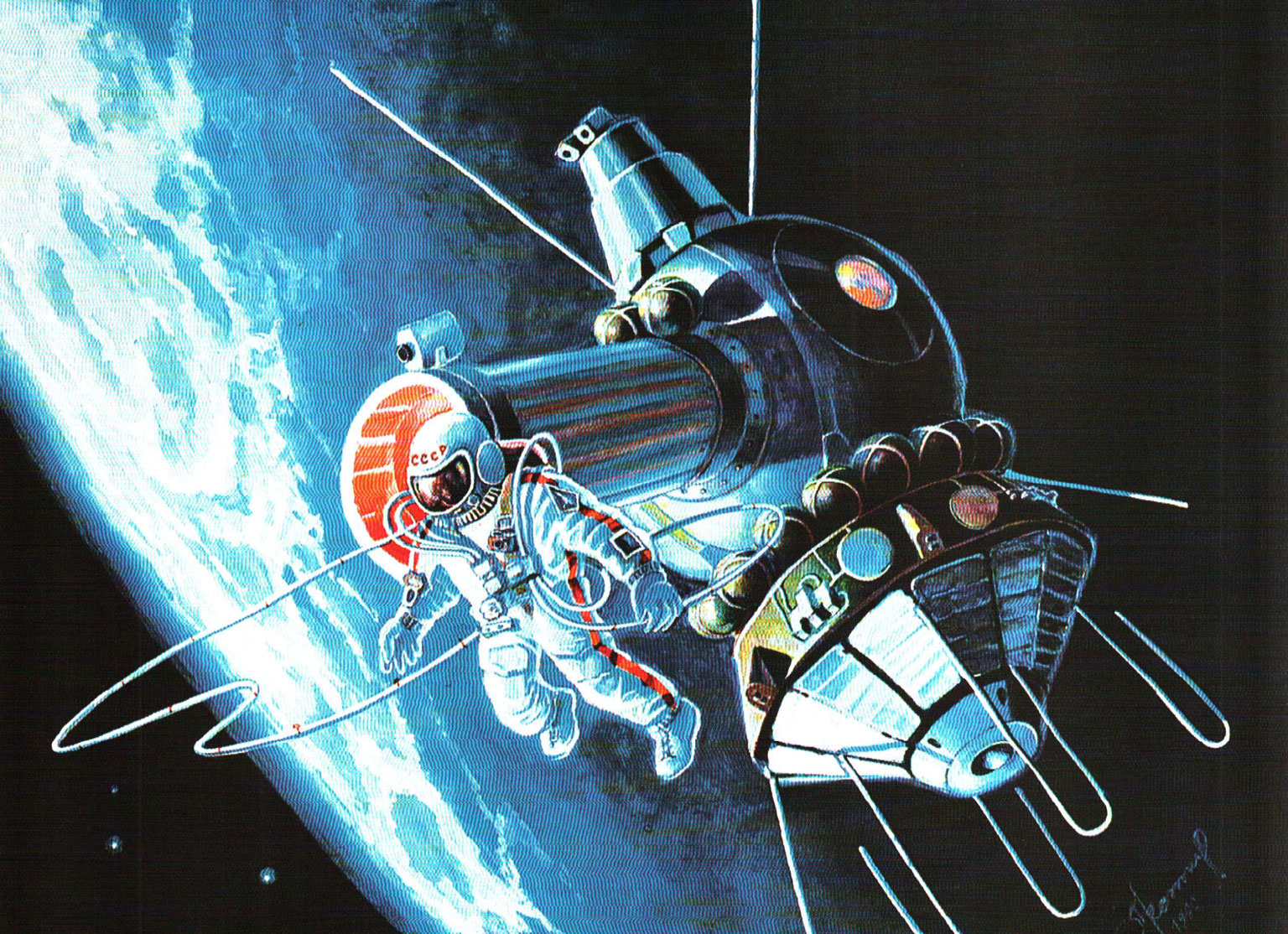Leonov, who celebrates his 80th birthday today (May 30), is a former fighter pilot, artist and one of the first Soviet cosmonauts (along with Yuri Gagarin). Leonov flew on two historic missions in the Russian space programme: the first spacewalk in 1965 and the first joint flight between the USSR and US in 1975.
It was a momentous day on 18 March 1965 when Leonov performed the world’s first spacewalk. However, Leonov struggled to fit back through the airlock as his spacesuit ballooned due to excess pressure during the walk. In the end, he opened a valve in the suit to let some of the high-pressure oxygen out, the suit deflated and Leonov squeezed through the airlock head first.
In that instance, Leonov’s brave decisions helped him escape unharmed, but the crew also had trouble with the spacecraft’s brakes upon descent. Leonov and the pilot of the craft, Nikolai Belyaev, made their final landing off course, in the depth of the Taiga forest.
Minutes earlier, the cosmonauts had orbited the Earth, becoming part of the new space age. Back on Earth, they had to fight to survive in a different kind of wilderness. After two nights in sub-zero conditions, the two cosmonauts made it out of the woods on skis, chaperoned by a rescue crew.

Leonov’s achievement was momentous – one of many historic milestones for the Russian space programme – beating the US Project Gemini spacewalk by three months. But it was not the heated competition between the USSR and US space programmes that launched the next phase of space travel. Rather, it was their collaboration.
Beginning in the 1970s, an unprecedented partnership began between these two space superpowers. It was this spirit of cooperation that launched the first joint USSR and US flight: the 1975 Soyuz-Apollo mission, with Alexei Leonov as the commander of the Russian crew.
The mission began with Russia’s Soyuz launch from the Baikonur Cosmodrome on July 15, 1975, followed by Apollo launch seven hours later from the Kennedy Space Centre. Differences in language, technology, and politics were set aside. The mission brought together the engineers from both nations, who collaboratively designed a petal-shaped universal docking system – the first of its kind.
The rendezvous of the two spacecraft, the Soyuz under command of Leonov and Apollo under command of Thomas Stafford went smoothly. The two crews – two cosmonauts and three astronauts – exchanged flags and gifts, participated in collaborative scientific research, and shared dinner together. They also explored each other’s crafts, describing the technologies to the eager audiences back home.

Leonov is not just a cosmonaut; he is also a talented artist who has reflected on his own exploration of space through numerous paintings and drawings, images of which will feature in the upcoming Cosmonauts exhibition. He has taken his coloured pencils on missions and drew portraits of his international crewmates as well as ‘landscapes’ of the Earth from above.
Also sharing a birthday with Leonov is another space pioneer. Helen Sharman, the first Briton in space and the first woman to travel to the Mir space station was born on 30 May 1963.
From the early days of the space programme, when every mission seemed to belong to the realm of science fiction, through Cold War rivalry to the era of the International Space Station, these stories are proof that once hostile nations are capable of cooperation towards a shared goal.
One comment on “The First Spacewalk”
Comments are closed.

As a student at Easter 1966 I made my first trip to Hungary. Our group was entertained by Communist youth groups whose leaders organised VIP tickets for us at the Liberation Day ‘celebrations’ in Heroes’ Square (none of my Hungarian friends ever wished to attend). Amid the pomp & ceremony a man in Russian military uniform was cheered as he joined the top brass. I took a small square photo on my Kodak Instamatic. I had captured for posterity my near meeting with Alexei Leonov!